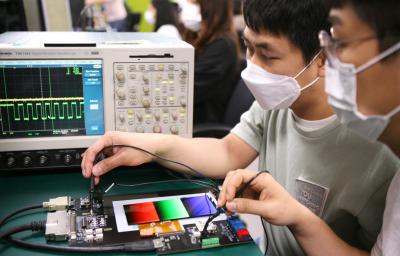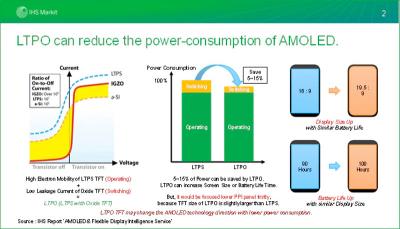Samsung Display announced a new OLED technology, called Adaptive Frequency that enables variable refresh rate in AMOLED displays - ranging from 10Hz to 120Hz. Running OLEDs at low refresh rates when possible can reduce the power consumption of the display (over all applications) by up to 22%.

This new display technology was applied for the first time in the Galaxy Note20 Ultra 5G smartphone, announced earlier this month, with its 6.9-inch 1440x3088 Dynamic AMOLED.
Adaptive Frequency displays uses the minimum refresh rate, according to the type of application use din the smartphone - 120Hz is used for gaming, 60Hz for movies, 30Hz for e-mails or text editing and 10Hz can be used for still images or social networking. Samsung says that at 10Hz the display consumes as little as 60% of the power compared to 120Hz.
The technology behind the Adaptive Frequency displays is Samsung's new LTPO (HOP) backplane.
Low-Temperature Polycrystalline Oxid, or LTPO, is an OLED display backplane technology first developed and adopted by Apple. LTPO combines both LTPS TFTs and Oxide TFTs (IGZO, Indium Gallium Zinc Oxide). LTPO is applicable for both OLED and LCD displays, actually, but this backplane technology is likely to be used exclusively in high-end OLED displays

In LTPO, the switching circuits are using LTPS while the driving TFTs will use IGZO materials. This could lead to a power saving of around 5-15% compared to the currently-used LTPS backplanes. The main drawback of LTPO, however, is that the IGZO TFTs are larger and so the display density may be compromised.

